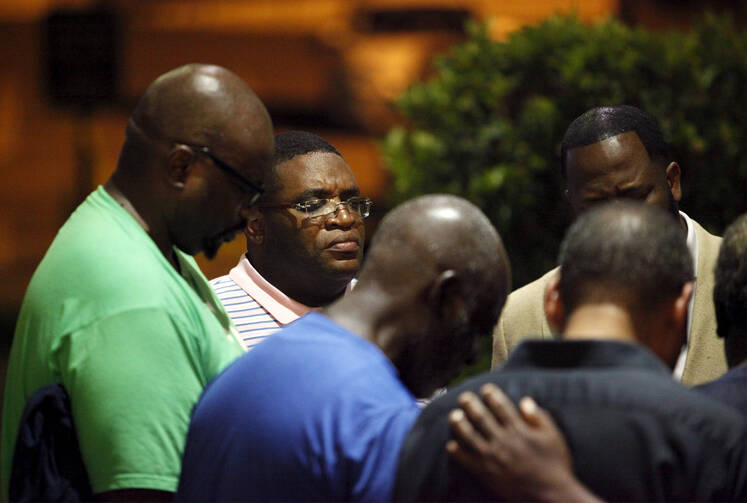Expressions of regret and horror, prayer services and moments of silence across the country followed in the aftermath of a shooting in a historic church in Charleston, S.C. The rampage on June 17 claimed the lives of nine people. Once again the nation faced the grim, inexplicable spectacle of a mass slaying while a police dragnet began for the 21-year-old suspect Dylann Roof.
His motives for the attack on an evening Bible study group were unclear at press time, but acquaintances described Roof as troubled since childhood and a website he apparently constructed was full of white supremacist rhetoric and imagery. The fact that the attack occurred in a church was bad enough; what has been worse is the clear likelihood that the rampage had been racially motivated—especially as the nation is already reeling from a number of controversies related to the questionable and at times homicidal use of force against African-American men and boys in recent encounters with police around the country.
When the suspect was eventually arrested 245 miles from Charleston in Shelby, N.C., the Internet was already crackling with revelations of racist gestures and comments made by the suspect that seemed to indicate this senseless attack had been rooted in racial animus.
For many, the massacre at a black church in Charleston was simply another mass shooting—more evidence that the number and severity of such attacks has been escalating in recent years even as efforts toward new gun control measures consistently fail to gather momentum in Washington. But for African-Americans, church violence has historic dimensions that make this attack even more difficult to endure. The attack on the Emanuel African Methodist Episcopal Church, the oldest A.M.E. church in the South, reflects “a pattern of random, racialized violence against religious institutions,” said Valerie Cooper, associate professor of black church studies at Duke University.
“Persons burned churches because they thought the congregating of blacks together meant that that was a foment for some kind of revolutionary action,” said the Rev. Teresa Fry Brown, historiographer of the African Methodist Episcopal Church.
Robert E. Guglielmone of the Diocese of Charleston issued a statement the day after the handgun rampage. “The inside of any church is a sanctuary,” he said. “When a person enters, he or she has the right to worship, pray and learn in a safe and secure environment. For anyone to murder nine individuals is upsetting, but to kill them inside of a church during a Bible study class is devastating to any faith community.”
Archbishop Joseph E. Kurtz of Louisville, Ky., president of the U.S. Conference of Catholic Bishops, on June 19 expressed his “grief and deep sadness” upon hearing the news of the slaying of the Rev. Clementa C. Pinckney and other church members. He said the nation’s Catholic community “stands with all people who struggle for an end to racism and violence, in our families, in our places of worship, in our communities and in our world.”
President Obama, commenting for the 14th time, by some media counts, on a shooting rampage during his presidency, said, “There is something particularly heartbreaking about the death happening in a place in which we seek solace and we seek peace, in a place of worship.”
He added, “I’ve had to make statements like this too many times. Communities like this have had to endure tragedies like this too many times.... Once again, innocent people were killed in part because someone who wanted to inflict harm had no trouble getting their hands on a gun.
“Now is the time for mourning and for healing, but let’s be clear,” President Obama said, “at some point, we as a country will have to reckon with the fact that this type of mass violence does not happen in other advanced countries. It doesn’t happen in other places with this kind of frequency.... And it is in our power to do something about it.”








